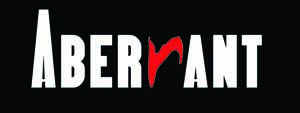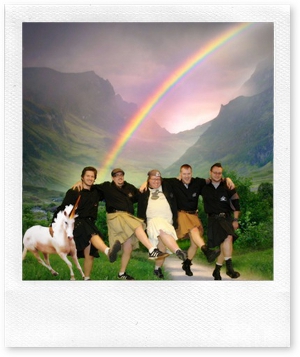Introduction: The System
Compared to D&D’s alignment system, the one employed in all Palladium products is seemingly simpler. It is a single-axis, or linear, alignment system. So it intertwines both legality and morality into a single spectrum. From “Good” to “Evil” it reads as follows:
The Good: Principled & Scrupulous;
The Selfish: Unprincipled & Anarchist;
The Evil: Aberrant, Miscreant, & Diabolic.
The Alignments
For those unfamiliar with the system I will try to offer some analogies for each alignment.
Principled: Correlates quite closely to “Lawful-Good” or at least “Neutral-Good” in D&D. This is the alignment for the goody-two-shoes type. Honesty, integrity, fairness and justice are held high, as well as respect for authority and a desire to work within the system – be it legal, civil, religious, etc. Examples include: a Paladin (D&D), Superman (comics), and Obi-Wan Kenobi (prequel trilogy).
Scrupulous: Is your “Neutral-Good” to “Chaotic-Good” alignment. This character puts “life and freedom above all else.” Very often a Scrupulous character will live by a moral code, but not as rigidly as the Principled character. The biggest distinction is in the Scrupulous character’s willingness to work outside the law. Examples include: Knight (D&D), Spider-Man (comics), Luke Skywalker.
The Palladium systems defines the Selfish category by stating, “Selfish characters (Unprincipled and Anarchist) are not necessarily evil, but they have their own best interests at heart and their opinions in mind above all others. These are the mercenaries, rogues, vigilantes and anti-heroes of the world.”
Unprincipled: Politically, an Unprincipled character would likely be a Libertarian (which makes the label “Unprincipled” a misnomer). They are sometimes schemers, but good at heart. This is closest to “Chaotic-Good” to “Chaotic-Neutral”. The first distinction being that while a Principled character will work within the law (only going around it when necessary), the Unprincipled character has an inherent distrust and disdain for all forms of authority and institutions, seeing them as intrinsically corrupt. They can be a team player, but it will always be on their own terms. Examples include: Rogue or Bard (D&D), Wolverine (comics), Han Solo.
Anarchist: Very self-centered, indulgent and impulsive. His motivations are entirely personal. Again, to quote Palladium, “The Anarchist is continually teetering between good and evil, rebelling against and bending the law to fit his needs.” Clearly “Chaotic” in regards to law, and “Neutral” in morality. Examples include: Rogue or Bard, The Punisher (on a good day), Lando Calrisian.
Aberrant: The first of the “Evil” alignments. Here the motivation is power. Aberrant has a lot in common with Anarchist, the difference is in the cruelty towards one’s enemies. Honor is important, though this is often corrupted in some way. The other value is loyalty – at least loyalty from his underlings. Perhaps “True Neutral” to “Lawful Evil” is the closest correlation to D&D. But if you’d prefer examples: a Devil (D&D), Magneto (comics), Darth Vader.
Miscreant: Here, we take another step up on the selfishness and megalomania scale. Personal pleasure, power, and wealth are the motives. “This character is a savage misanthrope out for himself” (Palladium). This character would fall somewhere in the “Neutral-Evil” to “Chaotic-Evil” range. My examples would be: King Kaius I (D&D Eberron), Lex Luthor (comics), Jabba the Hutt.
Diabolic: Finally, the lowest-of-the-low. This is as bad as it gets. Not necessarily random and crazy (but don’t exclude that either); they are just twisted. Any of the “Evil” alignments in D&D will work, so long as you put a “Very” in front of “Evil.” Examples: Orcus (D&D), Dr. Doom, Darkseid (comics), Emperor Palpatine.
Continue reading »







